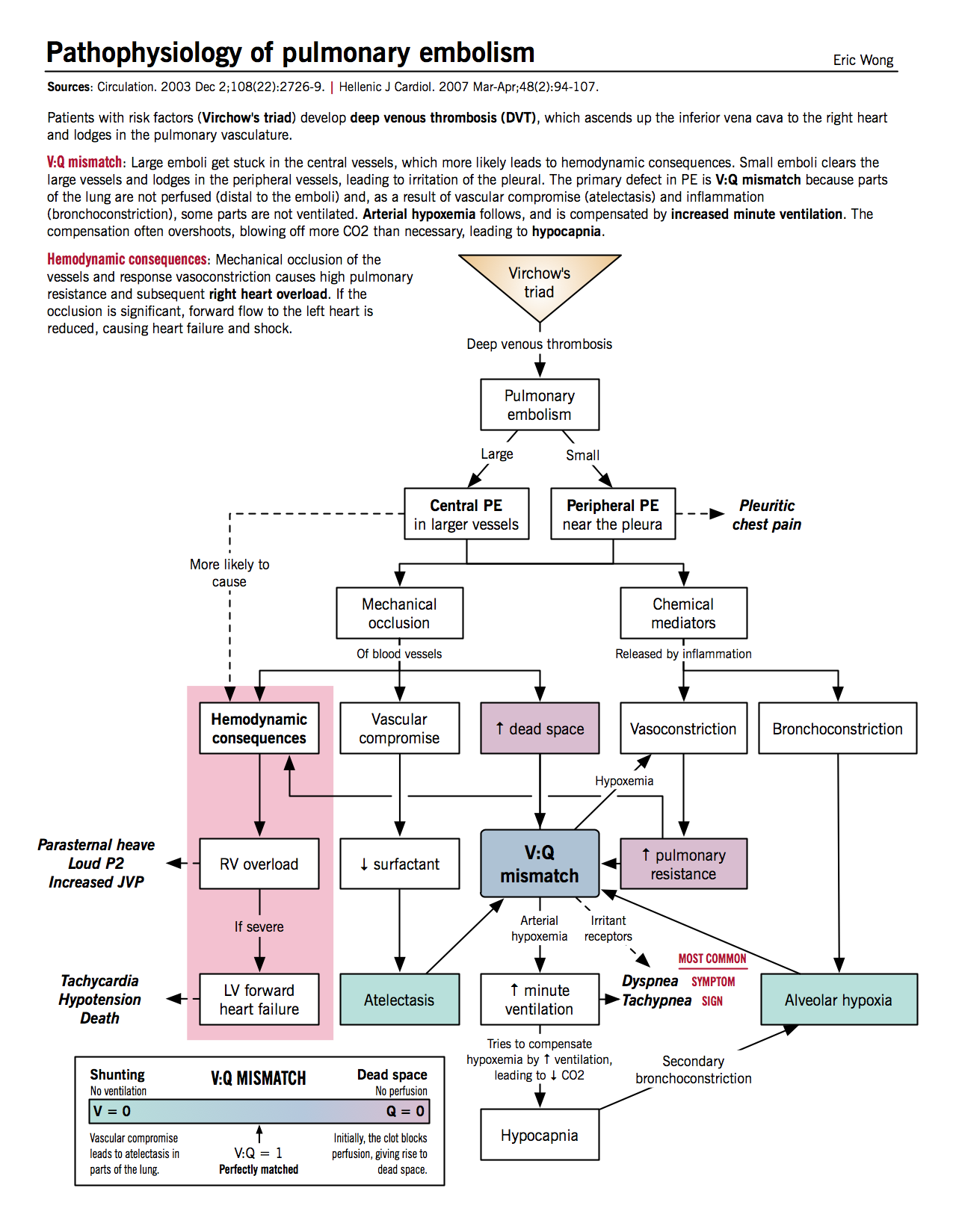
Pathophysiology Of Pulmonary Embolism. Pulmonary embolism is a common medical condition. It is commonly caused by a venous thrombus that has dislodged from its site of formation and embolized to the arterial blood supply of one of the lungs. To reach the lungs thromboemboli travel through the right side of the. An embolized clot from deep vein thrombosis dvt involving the lower leg.

Mild to moderate arterial hypoxemia which is observed in most of the cases can be explained by intrapulmonary venous admixture. The pathophysiology of pulmonary embolism. Although pulmonary embolism can arise from anywhere in the body most commonly it arises from the calf veins. Almost all blood clots that cause pulmonary embolism are formed in the deep leg veins. However pe sometimes can occur without any evidence of dvt. Although pulmonary embolism impairs the elimination of co 2 hypercapnia is rare because compensatory hyperventilation eliminates co 2 in all but the most extensive embolism.
The process of clot formation and embolization is termed thromboembolism.
Pulmonary embolism is caused by a blocked artery in the lungs. The pathophysiology of pulmonary embolism. The venous thrombi predominately originate in venous valve pockets inset and at other sites of presumed venous stasis. It is commonly caused by a venous thrombus that has dislodged from its site of formation and embolized to the arterial blood supply of one of the lungs. Mild to moderate arterial hypoxemia which is observed in most of the cases can be explained by intrapulmonary venous admixture. The most common cause of such a blockage is a blood clot that forms in a deep vein in the leg and travels to the lungs where it gets lodged in a smaller lung artery.